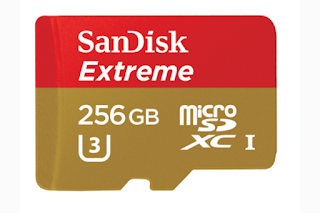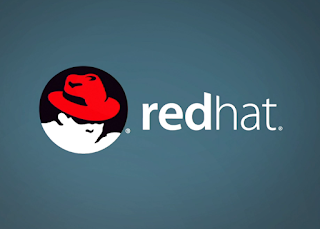Open standards and open source projects
are both essential ingredients for advancing the cause of interoperable
next-generation carrier networks.
 When a standards developing organization
(SDO), like MEF, creates standards, those written documents themselves aren’t
the end goal. Sure, the specifications look good on paper, but it takes a lot
of work to turn those words and diagrams into hardware, software and services.
And if there are any ambiguities in those specifications, or misinterpretations
by vendors building out their products and services, interoperability could be
problematic at best.
When a standards developing organization
(SDO), like MEF, creates standards, those written documents themselves aren’t
the end goal. Sure, the specifications look good on paper, but it takes a lot
of work to turn those words and diagrams into hardware, software and services.
And if there are any ambiguities in those specifications, or misinterpretations
by vendors building out their products and services, interoperability could be
problematic at best.
By contrast, when an open-source project
is formed, the team’s job is obvious: to create software and solutions. All too
often, the members of the project are focused on reaching a particularly
objective. In those cases they are working in a vacuum, and might write code
that works great but which can’t be abstracted to solve a more general problem.
In those cases, interoperability may also be a huge issue.
The answer is clear: bring together SDOs
and open-source teams to write open-source code that’s aligned with open
specifications. That’s what is happening at the LSO (Lifecycle Service
Orchestration) Hackathons hosted by MEF: open source teams come together to
work on evolving specifications, and the end result is not only solid code but
also effective feedback to MEF about its specs and architecture. Another
benefit: networking experts from across the communications industry work
together with software developers from the IT world face-to-face, fostering
mutual understanding of the constraints of their peers in ways that lead to
more effective interaction in their day jobs.
MEF recently completed its Euro16 LSO
Hackathon held in Rome, Italy during April 27-29, 2016. This followed the debut
LSO Hackathon at MEF’s GEN15 conference in Dallas in November 2015. (See “The MEF LSO Hackathon: Building
Community, Swatting Bugs, Writing Code,”
published in Telecom Ramblings.)
“The Euro16 LSO Hackathon built on what
we started in the first Hackathon at GEN15,” said Daniel Bar-Lev, Director of
Certification and Strategic Programs, MEF and one of the architects of the LSO
Hackathon series.
One big change: not everything had to be
physically present in Rome, which expanded both the technology platform and the
pool of participants. “We enabled work to be done remotely, said Bar-Lev. “While
most of our participants were in Rome, we had people engaged from all over the
United States. We also didn’t need to bring the networking equipment to Rome. Most
of it remained installed and configured in the San Francisco Bay area. Instead
of shipping racks of equipment, we set up remote access and were able to
position the hardware and software in the optimal places to get development
done.”
Lifecycle
Service Orchestration and the Third Network Vision
Why “Lifecycle Service Orchestration”
for the MEF-hosted LSO Hackathons? Bar-Lev explained that it ties into MEF’s
broad vision for Third Network services that combine the ubiquity and
flexibility of the public Internet with the quality and assurance of private connectivity
services such as CE 2.0.
“When we think of traditional CE 2.0 services,
we tend to think of them as “static” — often taking weeks or months to
provision or change a service,” said Bar-Lev. “With the Third Network vision,
we are driving specifications for services like CE 2.0 that can be created and
modified in minutes instead of months and also be orchestrated over multiple
provider networks.”
As Bar-Lev explained, the real work of
MEF today is to formally define Third Network services and all the related
services required to implement flexible inter-network communications.
“End-to-end LSO is essential for that,” he continued, “along with SDN and NFV.”
That’s where open standards and open source
projects converge, with MEF initiatives like OpenLSO (Open Lifecycle Service
Orchestration) and OpenCS (Open Connectivity Services). “It’s all about
creating and trying out building blocks, so we can give service providers reference
designs from which they can develop their offerings more quickly. They don’t
have to define those services themselves from scratch; rather they can access
them at MEF, which gives them a valuable and time-saving starting point,”
Bar-Lev said.
Indeed, the OpenLSO and OpenCS projects describe a wide range of L1-L7 services
that service providers need in order to implement Third Network services. MEF
is defining these services, and developers work on evolving elements of the
reference designs during LSO Hackathons.
A
Broad Array of Projects and Participants at Euro16 LSO Hackathon
According to
MEF, the OpenLSO scenarios worked upon at Euro16 LSO Hackathon were OpenLSO Inter-Carrier
Ordering and OpenLSO Service Function Chaining. The OpenCS use cases were
OpenCS Packet WAN and OpenCS Data Center. The primary objectives of the Euro16
LSO Hackathon included:
•
Accelerate
the development of comprehensive OpenLSO scenarios and OpenCS use cases as part
of MEF's Open Initiative for the benefit of the open source communities and the
industry as a whole.
•
Provide
feedback to ongoing MEF projects in support of MEF's Agile Standards
Development approach to specification development.
•
Facilitate
discussion, collaboration, and the development of ideas, sample code, and
solutions that can be used for the benefit of service providers and technology providers.
•
Encourage
interdepartmental collaboration and communications within MEF member companies,
especially between BSS/OSS/service orchestration professionals and networking
service/infrastructure professionals
Strong Industry Participation at Euro16
Around 45 people participated in the Euro16
LSO Hackathon – the majority in Rome and the remainder being the AT&T
Remote Team in Plano, Texas as well as other participants attending remotely
from other parts of the United States.
“We brought people together with widely
divergent backgrounds,” said MEF’s Bar-Lev. “We had software developers with no
networking expertise, and network experts with no software skills. The core
group worked in the same room in Rome for three days, with additional folks working
independently and syncing up with the Rome teams when appropriate.”
The Euro16 LSO Hackathon included
participants from Amartus, Amdocs, AT&T, CableLabs, CenturyLink, Ciena,
Cisco, Edge Core Networks, Ericsson, Gigaspaces, HPE, Huawei, Infinera,
Iometrix, Microsemi, NEC, Netcracker, NTT, ON.Lab, Telecom Italia Sparkle and
ZTE. The whole process was managed by Bar-Lev and Charles Eckel, Open Source
Developer Evangelist at Cisco DevNet.
“What is most important about the LSO
Hackathon is that it takes the specifications that are being defined and
transforms them into code”, said Eckel. “It moves that process forward
dramatically. The way standards have traditionally been done is a very long
process in which people spend months and sometimes years getting the details of
documents figured out, and then it can turn out that the specification is
almost non-implementable. With the LSO Hackathon we create code based on early
versions of the specifications. This helps the process move forward because we
identify what’s wrong, what’s missing, and what’s unclear, then we update the
specs accordingly. This is an important reason for doing the LSO Hackathon.”
Eckels continued, “Equally important is
the positive impact on the participating open source projects and open source
communities. Usability issues and gaps in functionality are identified and
addressed. The code implemented during the Hackathon is contributed back
upstream, making those projects better suited to address the requirements
mapped out by the specifications.”
Dawn Kaplan, Solution Architect,
Ericsson, added: “The Euro16 LSO Hackathon aimed to solve a very crucial
inter-carrier business problem that will change our industry when solved. The ordering project in the LSO Hackathon is
focused on implementing the inter-carrier ordering process between service
providers. At the Hackathon we built upon the defined use case, information
model, and a sample API to enable service providers to order from one another
in a completely automated fashion. With the code and practices developed at the
Euro16 LSO Hackathon we will come much closer to tackling this very real
issue.”
“We are a new participant in the LSO
Hackathon and find this initiative very important on a community level,”
explained Shay Naeh, Solution Architect for NFV/SDN Projects at Cloudify by
GigaSpaces. “Through the Euro16 LSO Hackathon, we are learning how to
contribute our own open source code solutions and combine them alongside
closed source solutions to make the whole ecosystem work. Open source is very
important to us, and we are excited to see telcos coming around to the
open source model as well. By having a close relationship with open source
communities, the telcos influence those projects to take into account their
operational requirements while reducing the chances of being locked into
relationships with specific technology providers. You can mix and match vendor
components and avoid having a vertical or silo solution. What is very important
to telcos is to introduce new business services with a click of a button and
this is definitely achievable.”
MEF Euro16 LSO Hackathon Report
MEF has published a new report
spotlighting recent advances in development of LSO capabilities and APIs that
are key to enabling agile, assured, and orchestrated Third Network services
over multiple provider networks. The report describes objectives, achievements, and recommendations
from multiple teams of professionals who participated in the Euro16 LSO
Hackathon.
The next MEF LSO Hackathon will be at
upcoming MEF16
global networking conference,
in Baltimore, November 7-10, 2016. The work will support Third Network service
projects that are built upon key OpenLSO scenarios and OpenCS use cases.
“We will have different teams working on
Third Network services,” said MEF’s Bar-Lev. The work will accelerate the
delivery of descriptions of how to create Third network services, such as Layer
2 and Layer 3 services. Participants will get hands-on experience and
involvement in identifying the different pieces of technology needed to develop
those projects."
About the Author
Alan Zeichick is founder, president and principal analyst, Camden Associates.













































